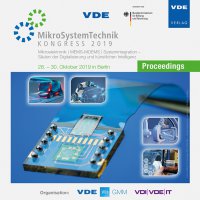A Combination of POD-based Model Order Reduction and Thermal Submodeling for Miniaturized Thermoelectric Generator
Konferenz: MikroSystemTechnik 2019 - Kongress
28.10.2019 - 30.10.2019 in Berlin, Deutschland
Tagungsband: MikroSystemTechnik 2019
Seiten: 4Sprache: EnglischTyp: PDF
Persönliche VDE-Mitglieder erhalten auf diesen Artikel 10% Rabatt
Autoren:
Yuan, Chengdong; Bechtold, Tamara (Department of Engineering, Jade University of Applied Science, Friedrich-Paffrath-Str. 101, 26389, Wilhelmshaven, Germany & Institute for Electronic Appliances and Circuits, University of Rostock, Albert-Einstein-Str. 2, 18059, Rostock, Germany)
Sadashivaiah, Gunasheela; Kress, Stefanie (Institute for Electronic Appliances and Circuits, University of Rostock, Albert-Einstein-Str. 2, 18059, Rostock, Germany)
Rudnyi, Evgenii (CADFEM GmbH, Marktplatz 2, 85567, Grafing b. Munich, Germany)
Inhalt:
Electrically active implants for regenerative therapies are gaining importance within an aging population of industrial nations. Major drawback of the battery-powered implants is the replacement of the drained power supply. Recently, thermoelectric generator (TEG), which transforms thermal energy into electrical energy, was developed as a power-support for electrically active implants. In this work, a newly designed TEG is incorporated within three-dimensional realistic human torso model. Pennes bioheat equation, is used to describe the heat transfer mechanism in tissue. Convection, radiation, and evaporation effects at the skin surface are applied as boundary conditions. Model order reduction (MOR) via proper orthogonal decomposition (POD) is applied to this nonlinear thermal human torso model to generate an accurate low-dimensional surrogate. Furthermore, for enabling an efficient design optimization of TEG, thermal submodeling approach is combined with POD-based MOR. This technology enables to decouple the thermal-domain simulation of human tissue model from the coupled-domain simulation of TEG model, while keeping the highest accuracy. In this way, an efficient design optimization of the TEG device is enabled.


